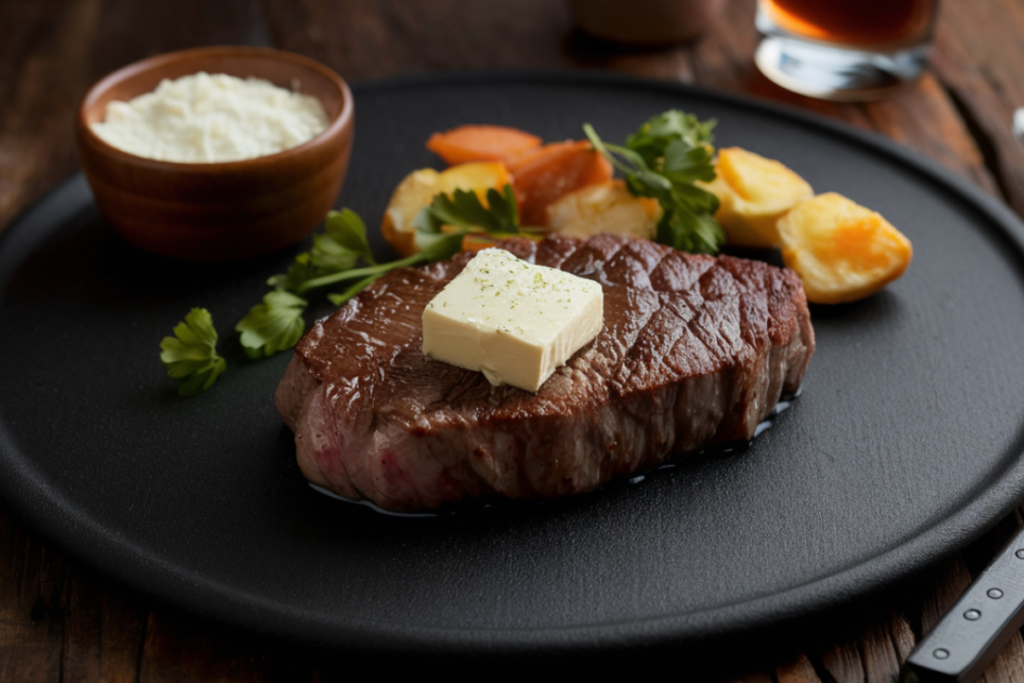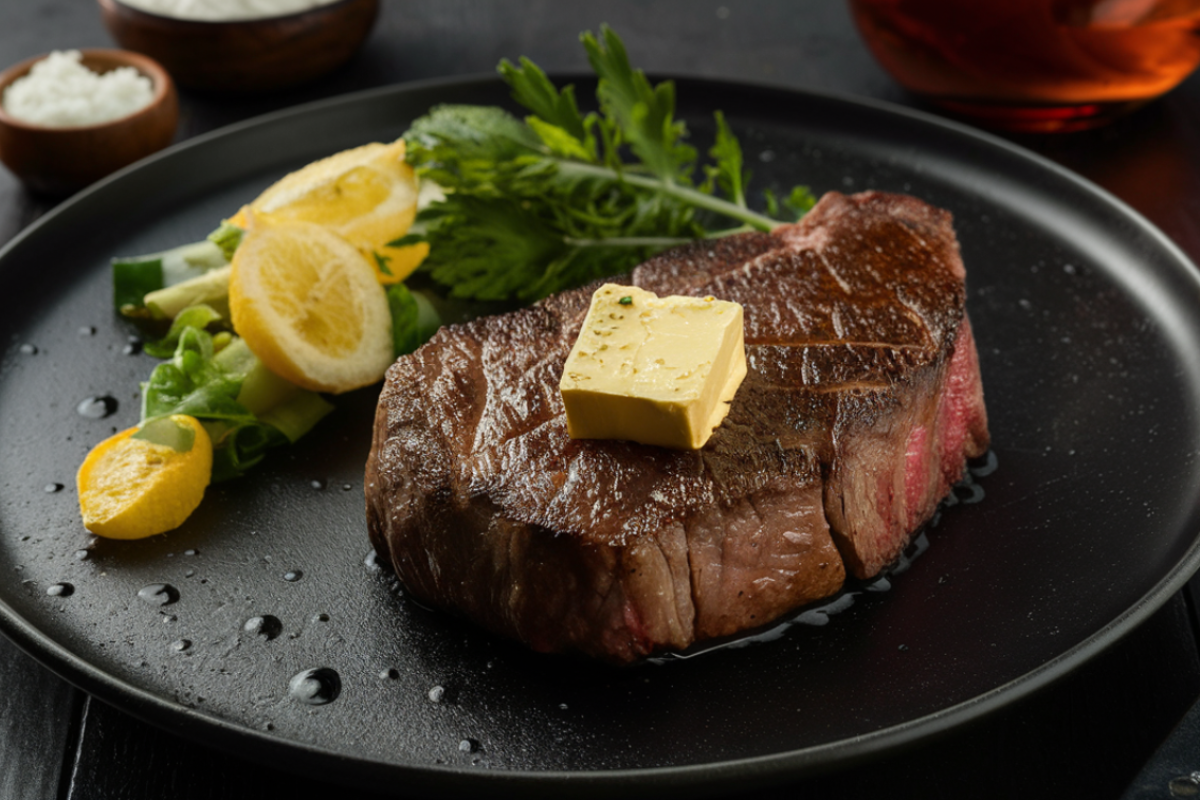Steak is a dish that can be elevated to new heights with the right cooking techniques and ingredients. One crucial ingredient that often makes a significant difference is butter. When used properly, butter can enhance the flavor, aroma, and texture of a steak, turning a simple meal into a gourmet experience. However, with so many types of butter available, it can be challenging to determine which one is the best for cooking steak. This guide will explore various types of butter, their effects on steak, and how to use them for optimal results.
Why Butter is Essential for Steak
Butter plays a vital role in cooking steak for several reasons:
- Flavor Enhancement: Butter adds a rich, creamy flavor that complements the natural taste of beef. It enhances the overall flavor profile, making the steak taste more indulgent.
- Moisture Retention: Butter helps keep the steak moist during cooking, preventing it from drying out, especially during searing.
- Aromatic Qualities: When butter is heated, it releases aromas that can enhance the sensory experience of eating steak.
- Crust Formation: Butter aids in the development of a flavorful crust on the steak, contributing to the Maillard reaction that gives steak its distinctive taste.
Given these benefits, choosing the right butter is crucial for achieving the best results when cooking steak.
Different Types of Butter to Consider
Unsalted Butter
Unsalted butter is a popular choice for cooking steak because it allows full control over the salt levels in the dish. This type of butter provides a pure, unadulterated flavor that can highlight the natural taste of the beef.
- Pros: Control over seasoning, pure flavor.
- Cons: Requires careful seasoning.
- Best Use: Ideal for recipes where you want to have precise control over the amount of salt.
Salted Butter
Salted butter simplifies the cooking process by adding both fat and salt in one step. This type of butter can enhance the flavors of the steak, but it’s essential to manage the overall salt content to avoid an overly salty dish.
- Pros: Convenience, enhanced flavor.
- Cons: Less control over salt levels.
- Best Use: Suitable for quick preparations where simplicity is key.
Clarified Butter (Ghee)
Clarified butter, or ghee, is butter that has been heated to remove water and milk solids, leaving behind pure butterfat. This process gives it a higher smoke point, making it ideal for high-temperature cooking.
- Pros: Higher smoke point, nutty flavor.
- Cons: Less creamy texture.
- Best Use: Perfect for high-heat cooking methods like searing or grilling.
Compound Butter
Compound butter is regular butter mixed with various herbs, spices, and flavorings. This customization allows for a variety of flavor profiles, making it a versatile option for enhancing steak.
- Pros: Customizable, adds depth of flavor.
- Cons: Requires preparation time.
- Best Use: Best as a finishing butter to add a burst of flavor right before serving.
European Butter
European butter typically has a higher fat content than American butter, resulting in a richer, creamier flavor. Some European butters also have a slightly tangy taste due to the cultured cream used in production.
- Pros: Richer flavor, higher fat content.
- Cons: More expensive.
- Best Use: Ideal for finishing steaks or making compound butters for a luxurious touch.
Grass-Fed Butter
Grass-fed butter is made from the milk of cows that eat a diet of grass, resulting in butter that is richer in nutrients like vitamin K2 and omega-3 fatty acids. It also has a more pronounced, earthy flavor.
- Pros: Nutritional benefits, distinct flavor.
- Cons: Higher cost, availability can be limited.
- Best Use: Suitable for those seeking a healthier option or a unique flavor profile.
Brown Butter
Brown butter is made by cooking butter until the milk solids caramelize, giving it a rich, nutty flavor. This butter can add complexity to steak, making it a favorite among gourmet cooks.
- Pros: Rich, nutty flavor; versatility.
- Cons: Requires careful preparation to avoid burning.
- Best Use: Ideal for finishing steak or making a flavorful pan sauce.
Techniques for Using Butter with Steak

Basting for Flavor
Basting is a technique where butter is melted in the pan and spooned over the steak as it cooks. This method not only adds flavor but also helps in forming a golden, crispy crust.
- How to Do It:
- Cook the steak in a hot pan with oil until it reaches the desired doneness.
- During the last few minutes, add butter, garlic, and herbs to the pan.
- Tilt the pan and spoon the melted butter over the steak continuously until well coated.
Finishing with Butter
Finishing with butter involves placing a pat of butter on top of the steak just before serving. The heat from the steak will melt the butter, creating a rich, flavorful sauce.
- How to Do It:
- After cooking and resting the steak, place a small pat of butter on top.
- Let the butter melt naturally over the steak during the resting period.
- Serve with the melted butter as a sauce.
Creating a Butter Sauce
Butter can be used to make a variety of sauces that complement steak. One popular method is to make a pan sauce using the drippings left after cooking the steak.
- How to Do It:
- Remove the steak from the pan and set it aside to rest.
- Deglaze the pan with wine, broth, or vinegar, scraping up the browned bits.
- Reduce the liquid slightly, then whisk in cold butter to create a smooth, glossy sauce.
- Pour the sauce over the steak or serve on the side.
Searing with Butter
Butter can be used for searing steak, although it should be combined with a high smoke point oil to prevent burning.
- How to Do It:
- Heat a mix of oil and butter in a pan until hot.
- Sear the steak on both sides until a crust forms.
- Finish by basting with the remaining butter.
Matching Butter with Different Steak Cuts
Each steak cut has its unique characteristics, and the choice of butter can further enhance these qualities.
- Ribeye: This richly marbled cut pairs well with bold flavors like compound butter or brown butter.
- Filet Mignon: A leaner cut like filet mignon benefits from the richness of European butter or grass-fed butter.
- New York Strip: Salted butter or clarified butter works well with this cut, providing a good balance of flavor and texture.
- T-Bone/Porterhouse: These cuts are ideal for basting with unsalted butter and aromatics during cooking.
The Importance of Quality in Butter
Not all butter is created equal, and the quality of butter you choose can significantly impact the final dish. Factors to consider include:
- Fat Content: Higher fat content generally means better flavor and texture.
- Source: Butter from grass-fed cows or European-style butter tends to have a richer flavor profile.
- Freshness: Butter that is fresh and properly stored will provide the best flavor.
Final Tips for Cooking Steak with Butter
- Avoid Overcrowding: When cooking steak, ensure that the pan is not overcrowded to allow proper searing and prevent steaming.
- Use Cold Butter for Sauces: When making a butter sauce, always use cold butter and add it gradually to avoid separating the sauce.
- Rest the Steak: After cooking, let the steak rest for a few minutes before serving. This allows the juices to redistribute and results in a juicier steak.
Experimentation and Personal Preference
While this guide provides a comprehensive overview of the best butters for steak, personal preference plays a significant role. Experiment with different types of butter and cooking techniques to discover what works best for your taste buds and cooking style.
Conclusion
Butter is an essential ingredient that can transform a steak from good to great. Whether you prefer the pure flavor of unsalted butter, the rich creaminess of European butter, or the complexity of compound butter, there is a perfect match for every steak lover. By understanding the different types of butter and how to use them, you can elevate your steak-cooking game and impress your guests with a truly gourmet experience

